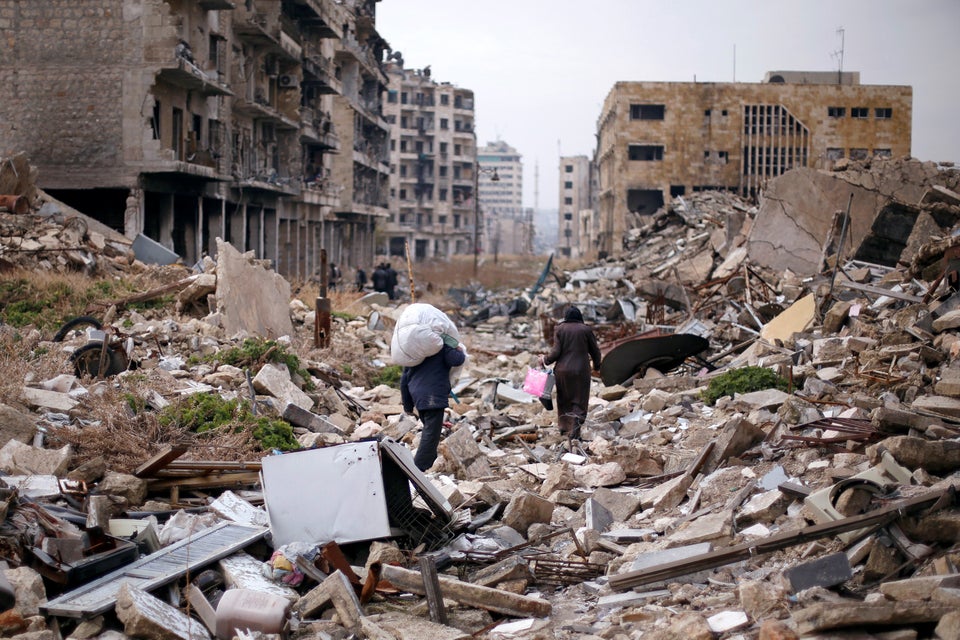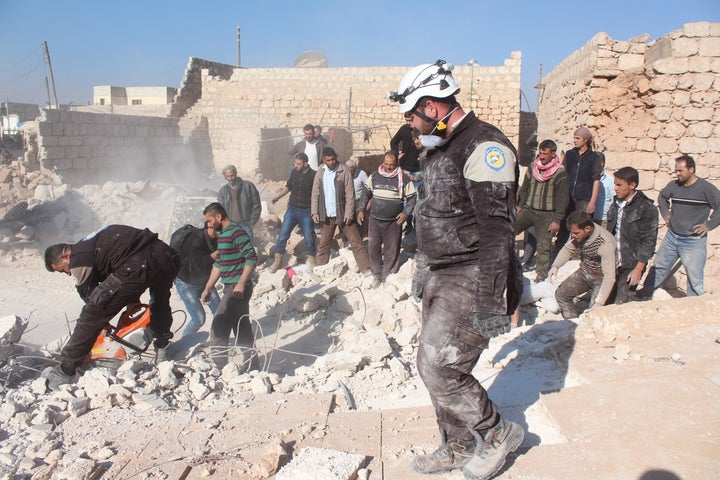
Syria’s civil war is a conflict rife with misinformation and reports that are difficult to prove. Much of the country is inaccessible to journalists on the ground, and news coming out of the country is often filtered through activists or state-controlled outlets.
Social media platforms have also made it easier for myths and intentional falsehoods to spread. Viral videos purporting to expose hidden truths of the war have racked up millions of views, despite their claims falling apart under scrutiny.
Although it’s completely rational to question the reliability of reports and sources of information from Syria, many people online have an unquestioning commitment to falsehoods that promote an alternate narrative to fact-based reporting.
Amid the daily torrent of inaccuracies that circulate about Syria, several ongoing myths have shown up over and over during the course of the conflict.
Myth 1: The White Helmets Are A Western Conspiracy
The Syrian Civil Defense, also known as the White Helmets, is an organization that has received enormous international praise for its life-saving rescue efforts. But Syrian government officials and activists supporting President Bashar Assad have also accused the group of supporting terrorists and acting as a puppet of western governments to promote regime change. The more fringe conspiracy theorists insist that the group doesn’t carry out rescue operations at at all, instead using “crisis actors” in staged attacks.
The White Helmets do receive significant funding from western governments, and advocate for a no-fly zone “if necessary” to stop the near-constant regime barrel bombings of civilians. The group also operates in areas under opposition control, which is one reason critics accuse the group of aiding terrorists. An ill-advised attempt to capitalize on the viral mannequin challenge also led the group to stage a rescue to make an obvious publicity video, fueling critics’ allegations that they had faked other footage.
But as Snopes detailed in a report on allegations against the White Helmets, there is no credible evidence that the group has any sustained links to terror groups or carries out hoaxes. International funding also doesn’t mean the Syrian-run group necessarily has nefarious goals. Humanitarian access in conflict zones can involve negotiating with disreputable groups for access to areas with people in need, but such talks don’t mean aid organizations support those groups.
Instead, much of the vitriol directed toward the group appears to come from pro-Russia or Assad media outlets and activists who equate any actor within opposition areas with Islamist extremist groups like the Islamic State and Jabhat Fateh al Sham. In reality, White Helmets civilian rescue efforts have been well documented and journalists have worked to investigate and authenticate the videos they produce.
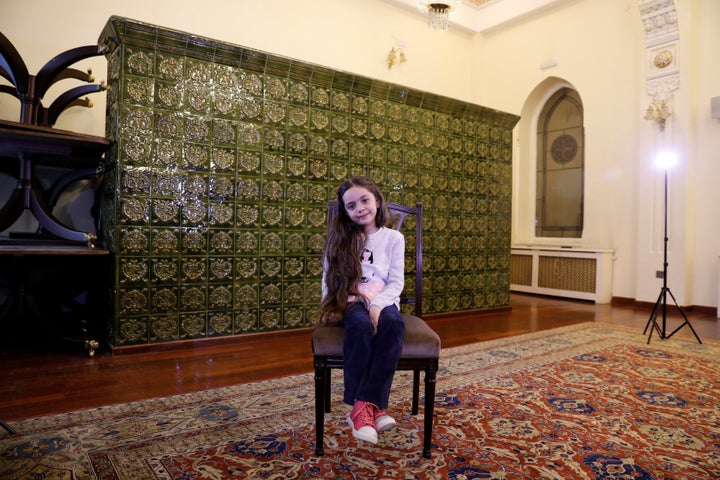
Myth 2: 7-Year-Old Bana Alabed’s Tweets From Aleppo Are Fake
One of the most prominent voices to emerge from Aleppo as pro-government forces besieged the rebel-held part of the city was 7-year-old Bana Alabed. Through her Twitter account, which her mom Fatemah manages, Bana shared bleak vignettes of life in wartime Aleppo along with occasional pleas for help.
Bana’s tweets quickly became the subject of controversy as they gained media attention during the fall of Aleppo. Critics questioned why the English used in the tweets was so proficient and how she could tweet from inside a war zone, and alleged she was a stooge for opposition groups. On the extreme side, conspiracy sites and Twitter trolls targeted Bana with threats and claims the whole account was a calculated hoax to promote regime change.
In reality, there is ample evidence that the basic facts surrounding Bana’s Twitter account are genuine. Many of the false claims against Bana’s account are easily fact-checked or ignore clearly stated information about her account. Bana’s Twitter bio openly acknowledges that her mother, an English teacher, runs the account, and Fatemah often signs off on tweets to indicate she wrote them rather than Bana. A detailed report from Bellingcat worked to authenticate the account and geolocate the tweets, finding that tweets were indeed coming from eastern Aleppo, and other events such as the bombing of Bana’s house did likely happen. Getting power and cell service within the eastern parts of Aleppo is difficult, but not impossible. Bellingcat also found that claims Bana’s family uses solar panels for power appear accurate.
The Bellingcat report also debunks some of the more convoluted attempts to discredit Bana, including one critic’s misrepresentation of metadata to claim the account was based in the U.K. and a fake Fatemah account trying to link her to al Qaeda. Other journalists, such as New York Times reporter Megan Specia and the New Yorker’s Ben Taub, have spoken with Fatemah as well and concluded her situation appears legitimate. Although not all of the information in Bana’s tweets can be verified, the evidence shows that the account is run by a mother and her daughter from eastern Aleppo.
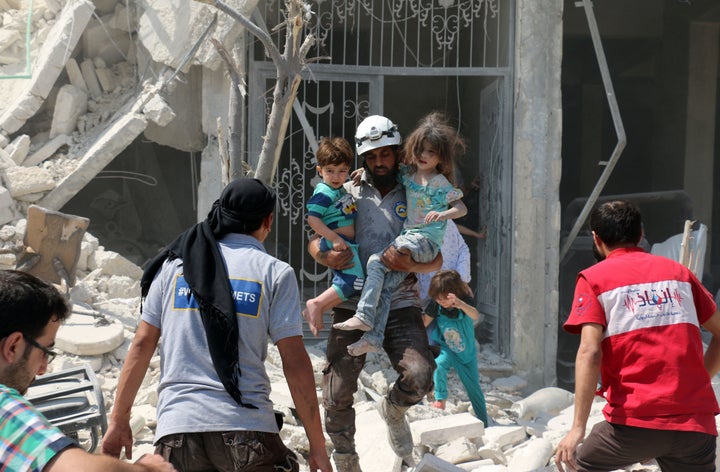
Myth 3: Victims And Attacks Are Staged Or “Recycled”
The Syrian war has no lack of horrific footage showing civilians wounded in pro-government airstrikes, but many Assad supporters claim that these videos are fake. Conspiracy theorists believe that “crisis actors” play the role of victims, some of whom have been “recycled” and can be seen playing the same role in multiple staged attacks. Assad himself has even made the claim that opposition groups are carrying out these elaborate hoaxes.
One frequently cited source for this claim is pro-Assad blogger Eva Bartlett, whose statements at a pro-Syrian-government panel held at the UN has been viewed millions of times on YouTube and Facebook. Many of these views come from the Facebook page In The NOW, which is an offshoot of the Russian state-sponsored media outlet RT.
Bartlett makes a number of claims about the Syrian war, including that White Helmets media workers recycle a child named “Aya” in two different reports. This claim, like much of what Bartlett says, has been debunked. A Snopes fact check on her statements found that the videos thought to be in question show distinctly different children, albeit with the same first name.
Bartlett did not respond to a request for clarification on her statement or to what videos she was referring.
Snopes’ report also notes that the “crisis actor” accusation is a common feature of conspiracy theories, including from Sept. 11 and Sandy Hook truthers. Other accusations of “crisis actors” in Aleppo have been similarly debunked.
Although not every image or video out of Syria can be 100 percent verified, that does not mean there’s a widespread conspiracy to fake attacks or manufacture injured citizens. As any aid organization can attest, there are more than enough airstrikes and victims in Syria’s war to make that unnecessary.
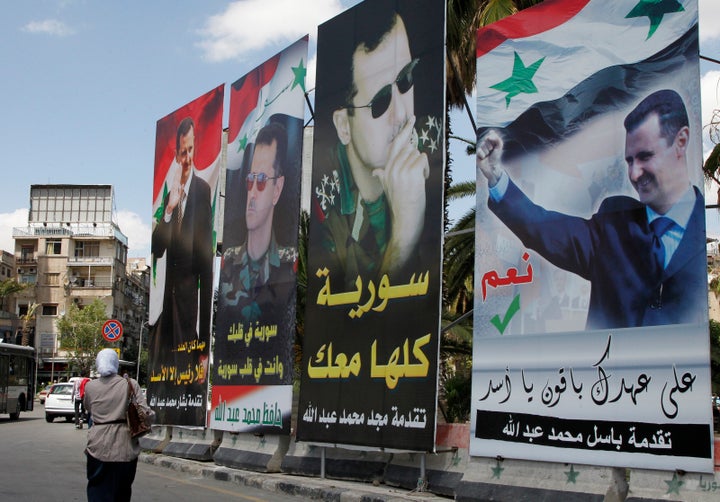
Myth 4: 2014 Elections Prove Syria Wants Assad To Be President
Pro-Assad officials and activist often cite the 2014 Syrian presidential election as proof that Syria’s regime is legitimate and backed by popular support. From their perspective, the vote shows that the Syrian people see Assad as a democratically elected leader who is fighting off an unpopular and foreign-backed terrorist insurgency.
Assad did win the 2014 election with 88.7 percent of the vote, but there are an endless number of reasons not to take this result at face value. Voting only occurred in government-controlled areas, and Assad-friendly voters were bussed to polling stations and carefully watched by security services. International observers were on hand from Syrian allies like North Korea and Iran, but official EU, U.S. and OSCE observers weren’t present.
There is also the major issue of the 9 million refugees, many of whom couldn’t vote because of their circumstances. Candidates faced an extremely high bar to entry, and opponents believe that Assad’s use of repression and intimidation prevented any real political opposition in the election. In addition to all of these delegitimizing factors, Syria is not a country with a history of free and fair elections even before the revolution.
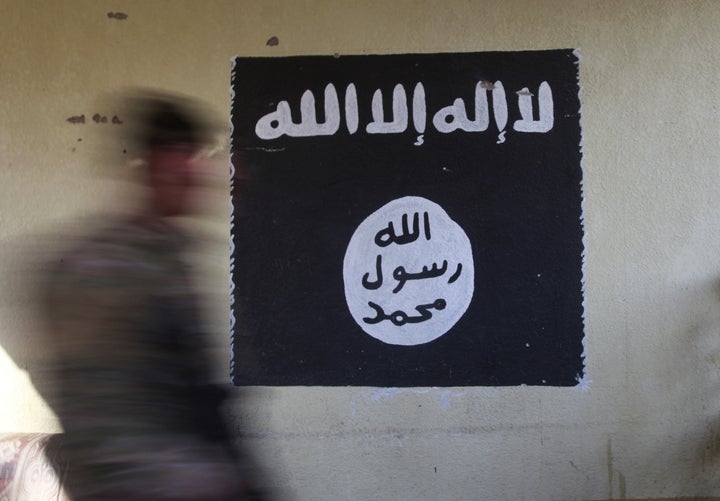
Myth 5: The U.S. Government And Barack Obama Created ISIS
A myth so pervasive that U.S. President-elect Donald Trump even used it to attack the Obama administration during last year’s election campaign, the idea that President Barack Obama and the U.S. created ISIS is a long-running conspiracy theory. There has also been a persistent belief in many Middle East countries, including Iraq, that the U.S. or Hillary Clinton is behind the rise of the ISIS.
These theories say more about international distrust of American foreign policy than they do about the actual origins of ISIS. The formation of ISIS is exceedingly well documented, as are the myriad factors and policies that made it the powerful terror group it is today.
The U.S.-led invasion of Iraq in 2003 and its destabilizing effect on the region did create conditions for an early incarnation of ISIS to thrive. Powerful figures in ISIS’s organization, including leader Abu Bakr al Baghdadi, also met while incarcerated in the U.S.-run Camp Bucca detention center in Iraq. Some experts also blame Obama’s partial withdrawal of forces from Iraq and reticence to intervene in Syria for creating space for the militant group to grow.
But these are only some of a wide range of causes that explain how ISIS formed. Assad, for instance, bears much of the blame for ISIS after years of pursuing policies that boosted jihadist groups. For much of the Syrian war, Assad also overwhelmingly targeted more moderate opposition groups while letting ISIS take over much of Syria. There are also key militant figures such as Abu Musab al Zarqawi, who founded ISIS in the literal sense, that are key in understanding the group.
Pinning ISIS’s growth on any single cause ignores the complexity and nuance that is necessary to understand it. Like all these myths, it requires a selective reading of history and facts in order to come to an unsupported conclusion.

